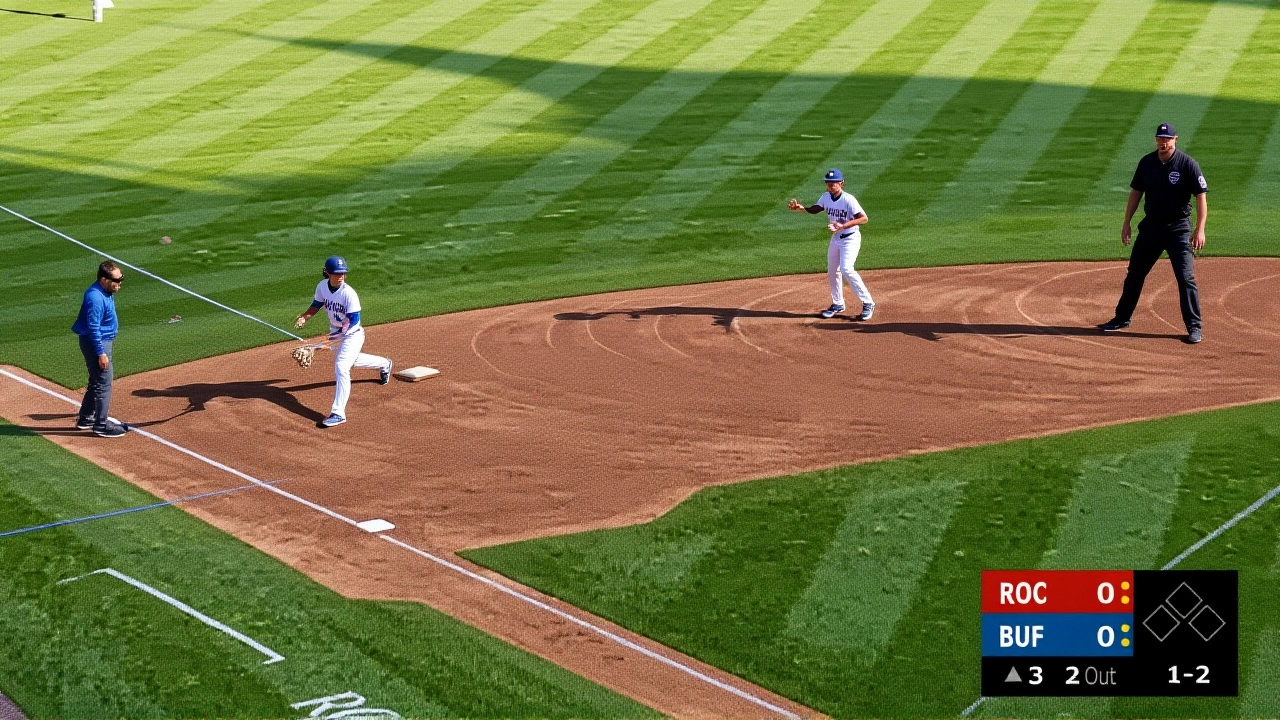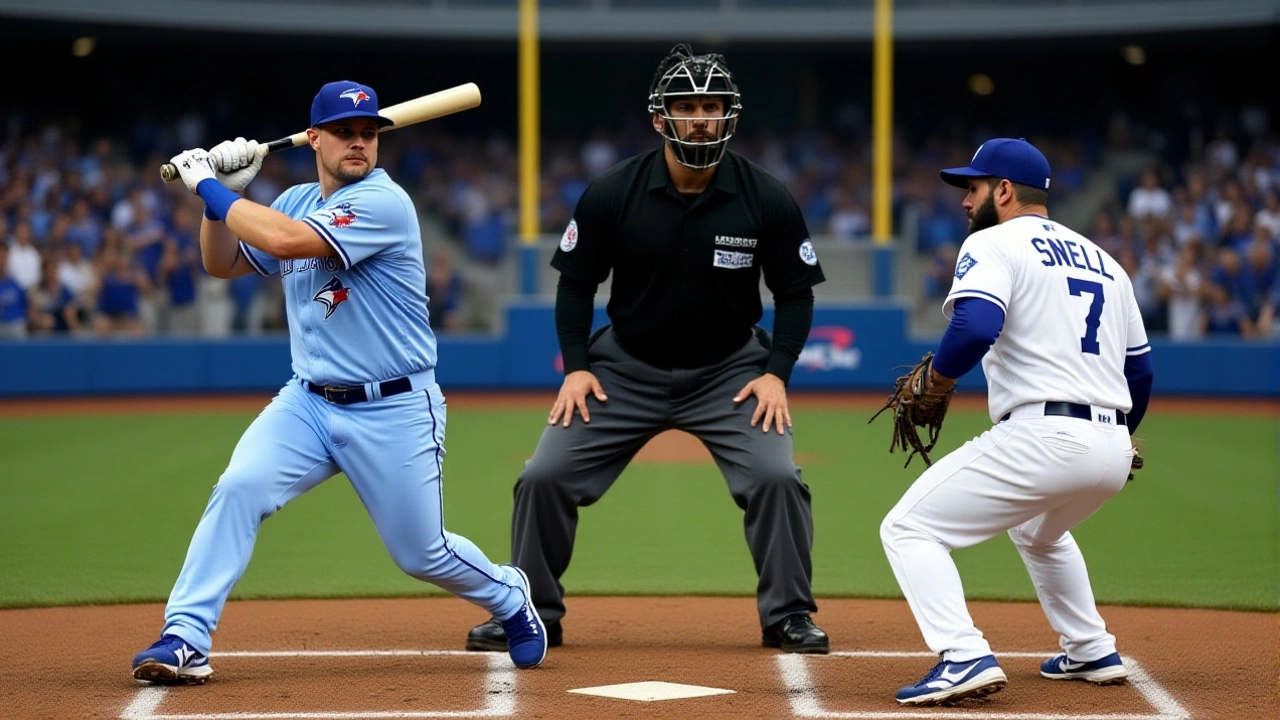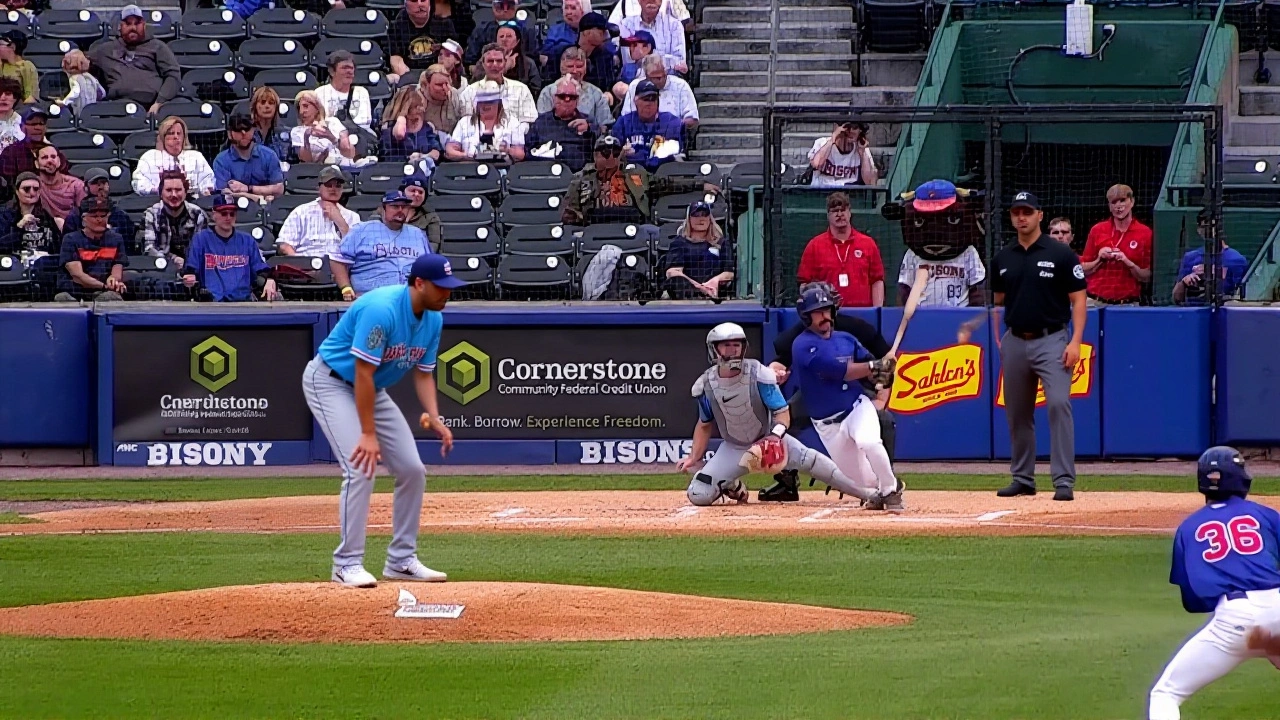At 11:05 AM UTC on May 27, 2025, Davis Michael Schneider swung through a 2-1 pitch and crushed a line drive to left field at Sahlen Field, driving in Joey Michael Loperfido with the go-ahead run. The Buffalo Bisons took a 4-3 lead in their game against an unnamed opponent — a moment that might have slipped past casual fans, but carried heavy weight for the Toronto Blue Jays front office watching from Toronto. Schneider, wearing No. 14 and playing left field, wasn’t just making a play. He was reminding everyone why he’s still in the organization’s long-term plans.
From Struggling MLB Rookie to Triple-A Anchor
Schneider’s path to this moment wasn’t smooth. He began the 2025 season with the Blue Jays, but hit just 1-for-15 (.067) in two weeks. By April 17, the team sent him down — not as a punishment, but as a reset. In Buffalo, he found his rhythm. Through 38 games, he’d posted a .226/.350/.391 slash line, 18 RBI, and 24 walks. Those aren’t eye-popping stats on paper, but the underlying numbers tell a different story: 24 walks means he’s seeing pitches, working counts, and forcing pitchers to make mistakes. And when they do, he’s punishing them.Clutch Hits Add Up
This wasn’t Schneider’s first key hit of the season. On April 25, he tied a game 1-1 with an RBI double — a 00:00:18 clip still live on MiLB.com. Then, on May 21 at Coca-Cola Park in Allentown, Pennsylvania, he drove in his 14th run with a single to shallow left-center, tying the game against the Lehigh Valley IronPigs. And just six days before the May 27 game, he hit a two-run homer that cleared the left-field screen — a shot that, according to Bally Sports Live, “showed power to all fields.” That’s the kind of consistency that doesn’t show up in a single stat line. It’s in the pattern.The Bisons: A Historic Franchise With a Modern Mission
The Buffalo Bisons aren’t just any Triple-A team. Founded in 1877, they’re the oldest continuously operating minor league franchise in North America. Since 2013, they’ve served as the Blue Jays’ top affiliate under a Player Development Contract that runs through 2030. Managed by Torey Lovullo — a former MLB skipper with deep organizational ties — the Bisons have become a laboratory for player development. And Schneider? He’s one of their most promising lab results.
Why This Matters for Toronto
The Blue Jays are in a weird spot. They’re trying to balance competitiveness with youth. Their outfield is crowded, but inconsistent. Lourdes Gurriel Jr. is aging. Anthony Santander is a free agent after 2025. And while Vladimir Guerrero Jr. anchors the lineup, the depth behind him is thin. Schneider’s .822 OPS during his last recall in June 2023 — when he hit five homers and drew 16 walks in 38 games — wasn’t a fluke. It was a signal. Now, with 24 walks already this year and a growing reputation for patience at the plate, he’s not just a bench option. He’s a potential platoon bat against right-handers, a late-inning spark, maybe even a trade chip if the Jays need pitching.What’s Next? The June Roster Expansion Window
The next big moment isn’t in Buffalo. It’s in Toronto. On September 1, MLB teams can expand rosters from 26 to 28 players — but for teams in playoff contention, the real window opens in late June, when rosters expand to 28 and players can be shuttled more freely. Schneider’s performance has made him a strong candidate for that June call-up. He’s not just hitting. He’s doing it with discipline. He’s not just playing left field — he’s playing it with intelligence, reading balls off the bat, cutting off liners, and making the kind of plays that managers notice.And if he gets called up? He won’t be a rookie anymore. He’ll be a player who’s been tested — in the majors, in the minors, in pressure situations. He’s been down. He’s come back. And now, he’s hitting when it counts.

Historical Context: A Legacy in Red and Navy
The Bisons have seen it all. They’ve hosted legends like Hank Aaron and Willie Mays during exhibition games. They’ve endured the collapse of the Buffalo Braves (NBA) and the near-loss of their own franchise in the 1990s. But they’ve survived — and thrived — because of players like Schneider: the overlooked, the underestimated, the ones who prove they belong not with flash, but with consistency. This isn’t just about one double. It’s about the quiet, steady climb of a player who refuses to be forgotten.Frequently Asked Questions
Why is Davis Schneider still in Triple-A after starting the season in the majors?
Schneider started 2025 with the Toronto Blue Jays but struggled mightily, going 1-for-15 (.067) in early April. Rather than keep him on the roster as a liability, the Blue Jays optioned him to Buffalo to reset his approach. In Triple-A, he’s regained his plate discipline, drawing 24 walks in 38 games — a sign he’s learning to work counts and wait for pitches he can drive.
How does Schneider’s 2025 performance compare to his 2023 recall?
In 2023, after being recalled in June, Schneider posted a .822 OPS with five home runs, 14 RBI, and 16 walks in 38 games. This year, through 38 games, he’s at .226/.350/.391 with four homers, 18 RBI, and 24 walks — showing even better on-base skills. His walk rate has jumped from 18.8% to 26.3%, suggesting improved pitch recognition — a key reason he’s closer to a permanent MLB role now than he was in 2023.
What’s the significance of the Buffalo Bisons being the Blue Jays’ Triple-A affiliate?
Since 2013, the Bisons have served as Toronto’s top minor league team under a contract extending through 2030. This long-term partnership means the Blue Jays have deep control over player development — from hitting philosophies to defensive positioning. Schneider’s improvement is a direct result of this alignment: the same coaching staff, same swing mechanics, same expectations. That continuity is rare in baseball and gives prospects like him a clearer path to the majors.
Could Schneider be traded before being recalled?
Possibly. While Schneider is a strong candidate for a June recall, his combination of power, patience, and left-handed bat makes him a valuable trade asset. With Anthony Santander set to hit free agency after 2025, the Blue Jays could use Schneider as leverage to acquire pitching depth. But if he keeps hitting with authority and drawing walks, Toronto may keep him — especially if they’re in playoff contention by August.
How does Schneider’s performance impact the Buffalo Bisons’ season?
Schneider’s emergence has been critical for the Bisons’ offensive stability. After losing key hitters to promotion and injury, his ability to drive in runs — 18 so far — and get on base (.350 OBP) has kept them competitive in the International League’s North Division. With 24 walks and four homers, he’s become their most reliable hitter in high-leverage situations, helping them stay in playoff contention despite inconsistent pitching.
Is Schneider’s RBI double on May 27 his most important hit of the season?
Not necessarily — but it’s the most timely. He had earlier RBI doubles on April 23 and April 25, and his May 21 single tied a game against Lehigh Valley. But this double came in the sixth inning with two outs, runners on second and third, and the Bisons trailing 3-2. It wasn’t just an RBI — it was a game-changer. And in a season where every win matters for playoff positioning, that’s the kind of hit that defines a player’s value.
